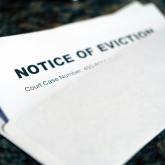
PROTECTING TENANTS FROM UNWANTED VISITORS
Published 15 March 2024
Recent stories about a tenant in social housing holding their landlord responsible for a rat problem in their home has drawn sharp focus on the whole issue of vermin, writes Catherine Hunt.
As we get into spring, this problem becomes more acute: rodents start to flee from fields, insects wake up from their winter hibernation and start to become active, and the warmer weather encourages animals to breed, literally multiplying the problem.
Unwanted animal intruders come in many forms, from rats and mice to bees, wasps, ants and fleas. We have recently had to deal with a case of an infestation of squirrels, which is enough to drive any householder nuts.
Many tenants think that a vermin infestation is automatically the landlord’s responsibility, but in fact it is almost always down to the tenant both to avoid the problem, and to deal with it when it occurs.
The only exception to this would be if the problem stems from a shortcoming in the maintenance of the property. So if, for example, a landlord had not repaired a hole in the wall which had allowed the ingress of the animal, then the tenant would have a good case in requiring the landlord both to pay to deal with the infestation, and to make good the repair.
Invasive animals are both cunning and extremely adept at gaining entry to a home, capable of shimmying up downpipes and jumping from overhanging trees. So landlords need to be reminding tenants to help themselves when it comes to avoiding such infestations.
Simple measures such as ensuring there is no fallen fruit on the ground, trimming overhanging branches, and avoiding overflowing bins are the very basics of reducing any vermin issue.
This doesn’t mean that landlords should entirely wash their hands of the problem. Vermin infestations can cause considerable damage to a property, from rodents eating thorough electrical cables (and causing a fire hazard) to carcasses rotting in the attic.
So it is in the landlord’s best interests to work with tenants both to remind them of their responsibility to take steps to avoid an infestation, and to ensure they deal with any problem quickly to avoid further damage.
As ever in the landlord/tenant relationship, the tenancy agreement is the black and white arbiter of who is responsible for what – but common sense and engagement is the route to avoiding problems in the first place.
Share this story
Arnolds Keys Blog

DESPITE THE TECHNOLOGY, PROPERTY IS STILL ALL ABOUT PEOPLE
8 March 2024
If a young person ever asks you for careers advice, the best tip you can give them is this: you spend a huge part of your life at work, so... Read more >

PATIENCE IS THE KEY TO LONG-TERM SOIL HEALTH
24 February 2024
You don’t need a meteorologist to know that this winter has been particularly wet, writes James Hill. Read more >

PRACTISING WHAT WE PREACH
21 February 2024
While it is customary to cite the pandemic as the reason for all sorts of seismic changes in the way we work, in reality Covid simply accelerated a process which... Read more >

REFORM FOR EVERYONE’S BENEFIT, NOT JUST CYNICAL POLITICAL GAIN
16 February 2024
After many delays, this week housing minister Michael Gove finally outlined a timetable for the abolition of so-called ‘no fault’ Section 21 evictions, confirming that the measure will be enacted... Read more >
